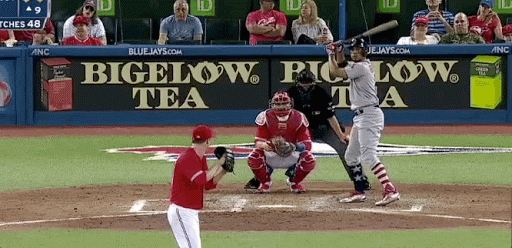An Investigation into Sandy Leon’s Current State of Worry
I hope you will, in the service of a brief investigation into human worry, allow me to engage in some baseless speculation.
We tend to think of player decline as a gradual business. Guys get good, peak, turn 30, and then start to be less good. They lose a step on the basepaths, a tick on their fastball. The idea of making new friends wears them out. Their doctors tell them they just have to live with some uncomfortable stuff now. Any given player’s career might buck those trends, of course. Some fail to develop entirely, nary a peak to be found. Pitchers hurt their elbows and retire young; a designated hitter or two keeps trundling along past age-40. But most players have time to get used to the idea of being at home more.
Except, what if they didn’t? What if for a hitter, it weren’t an issue of injury, or being hit by a car, but the gift deciding, quite suddenly, to leave you? Poof! Gone! We know that isn’t how this stuff generally works. Players age or get hurt or someone better comes along; yips are a throwing dysfunction. But I have often wondered how much of a player’s reaction to any given strikeout is a concern that they will never get a hit again. That this is the first in a series of whiffs and groundouts and balls caught at the track that concludes with them no longer being baseball players. They could hit, and now, quite simply, they can’t.
To wit, Sandy Leon hasn’t had a hit since August 23. In 13 games and 30 plate appearances, he has walked just once and been hit by a pitch twice. He has a -73 wRC+ over that stretch. I watched the at-bats. It wasn’t screaming liners and vindictive BABIP. He has just been quite bad at baseball. He looks resigned. And I wonder how worried he is. I mean, of course he is worried, and probably a lot. He hasn’t played since Saturday. The Red Sox are in a great dream and he is trapped in a small nightmare. But I wonder when he has felt the most worried about this, this idea that he can’t hit anymore, this secret concern, and how worried he was.
You might think the low point was this past Saturday, when he struck out looking against the Mets’ Daniel Zamora, and his own broadcast spent much of the at-bat talking about the Cy Young chances of a pitcher who wasn’t pitching that day, or in the American League.

This was his last at-bat before being benched. He is probably 13 percent worried here. It has been a while. He’s in a bad way.
Or perhaps in the moment after he held out his hand so as to assert, yeah, Lucas Giolito had hit him with a pitch, such an obvious plea for and acceptance of charity. Here, 4%. Yes, he’s worried, but also, that hurt. He’s thinking mostly about how much it hurt. And feeling indignant that he was doubted. But also feeling that it hurt. Ouch.
Or perhaps on September 4, when he twice came to the plate with the bases loaded and two outs and twice failed to capitalize. Maybe 10%? That’s a lot of suck in a three hour span, but also, his team won. He was probably high-fived by his teammates at the end of it, though likely in a perfunctory way.
But I think the real answer is September 7, at home against Gerrit Cole. In the bottom of the fifth inning, Sandy struck out swinging, but reached base when the pitch skittered away from Martin Maldonado. This is 18% at least, and probably as high as 25.
He wants to be on first, needs it badly, but not like this. All that erased his failure was someone else’s worse stumble. Maybe there isn’t work as we understand it in a hit-by-pitch, but there is some sacrifice. There’s a dignity in it. Sandy was wounded in a trivial service. But a ball that gets away, a bit of luck that necessitates such a hard run down the line, telegraphing so strongly all his pent-up desperation, his concern he won’t speak of?
After it is clear that Leon is safe, first base coach Tom Goodwin puts out his hand for a fist bump, and there is just the smallest pause from Sandy, a pause in which I assume he looked his worry square on, wondered if he would ever reach base by a hit again, and considered not accepting Goodwin’s gesture. Fist bumps are for ballplayers, and what if suddenly he isn’t one of those anymore, only he doesn’t quite know it yet? Most of him probably moved on to running the bases. But I bet 18-25% didn’t.
…
The other day, my DVD player stopped working in the middle of a movie. I got it a year ago. Sandy Leon will almost certainly hit again. He might tonight! He’s a professional baseball player. He’ll get at least a few more chances. But I bet he is worried, at least 4% of him and maybe as much as 25. Sometimes things just crap out and take your copy of Tombstone with them.







